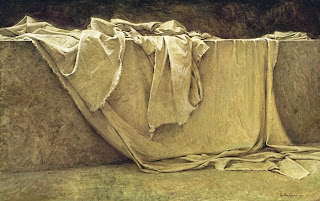Related to God
Fourth Sunday of Easter B (26 Apr 2015)
Homily of Fr. Paul Panaretos, S.J.
In Jesus’ time the work shepherds did was not attractive. The shepherds keeping night-watch over their flock1 at Jesus’ birth likely were hired men. Owners of sheep hired others to guard flocks; owners slept at night; they avoided the lonely tedium of a shepherd’s day. Day and night many hirelings did work few sought. Hired men did not own the sheep they watched. That helps us appreciate what Jesus’ hearers understood: many had no concern for the sheep. Eking a living had reshaped the image of shepherd.
Good shepherd Jesus offers us God’s life he shares with his Father. After his resurrection Peter realized Jesus’ risen life was cornerstone and foundation of creation. As cornerstone Jesus’ risen life is the measure of God’s love—for God’s son and all humans with whom God’s son joined himself.
God’s resurrection-love for Jesus recovers the way the image shepherd evoked divine love and care. By calling himself the good shepherd Jesus proclaimed he embodied divine love and care. Jesus offered himself as more than a guide: he offered himself as the truly perfect model of living and loving: freely I lay down my life in order to take it up again.
Jesus reshaped shepherd to mean giver of divine life in no vague or random way. Jesus shares his risen life with each of us as if each of us was the sole person in the universe. He does so by his Spirit, the energy of his risen life. Jesus joins us to himself in an intimate, knowing way: I know mine and mine know me, just as the Father knows me and I know the Father. In Jesus we are children of God.
On Jesus’ lips children is an endearing term. Children suggests we enjoy a future: to grow in our identity as beloved by Jesus, who is beloved by God. That future is our personal connection with the Easter mystery. To grow in our identity as beloved by Jesus also is the lifelong mission of each of us. The word the church uses for our mission is “vocation.” It echoes the words of St. Therese of Liseux: “LOVE…IS THE VOCATION WHICH INCLUDES ALL OTHERS; IT’S A UNIVERSE OF ITS OWN, COMPRISING ALL TIME AND SPACE—IT’S ETERNAL!”3
In his message for this World Day of Prayer for Vocations Pope Francis personalized our love-universe:“The Christian vocation is first and foremost a call to love, a love which attracts us and draws us out of ourselves. …To hear and answer the Lord’s call is not a private and completely personal matter fraught with momentary emotion.” [To hear and answer the Lord’s call] fills our lives with joy and meaning.”4
The pope addressed us all because Jesus calls all of us: the single; married; men and women who consecrate their lives by vows of chastity, poverty and obedience; clergy. Praying for vocations is universal: that all baptized into our risen Messiah and Lord may grow ever genuine, generous children of God, who witness to the new life our risen Messiah has won for us. We witness well when “all [our] activities [are] bathed in the light of the gospel.”5
In your daily 15 minutes with Jesus this week
- Rest in our triune God.
- Ask Mary and your patron saint to present you to Jesus.
- Chat with him: praise him for laying down his life to share with us his risen life.
- Ask Jesus two things: to renew us in our vocations; and to bless young people discerning their vocations so they may live their baptized “lives with joy and meaning.”
- Close saying slowly the Lord’s Prayer. To call God our Father joins us with Jesus and his relationship with his Abba,6 the font of life and love, the source of all we are and have.
Link to this homily’s Spiritual Exercise
_____________
- Luke 2.8.
- The earliest witness, Jacob: God who has been my shepherd from my birth to this day (Genesis 48.15). The image gained lasting asso-ciation with David, to whom the Lord said…You shall be shepherd of my people Israel, and you shall be prince over Israel’ (2Samuel 5.2). Matthew recalled that in his gospel (2.6).
- Catechism of the Catholic Church, 826.
- His Message on the occasion of the 52nd World Day of Prayer for Vocations.
- The Second Vatican Council’s Pastoral Constitution on the Church, 43.
- Matthew 14.36.
____________
Wiki-images: Good Shepherd PD-US St. Michael’s Cornerstone by Farragutful CC BY-SA 3.0
